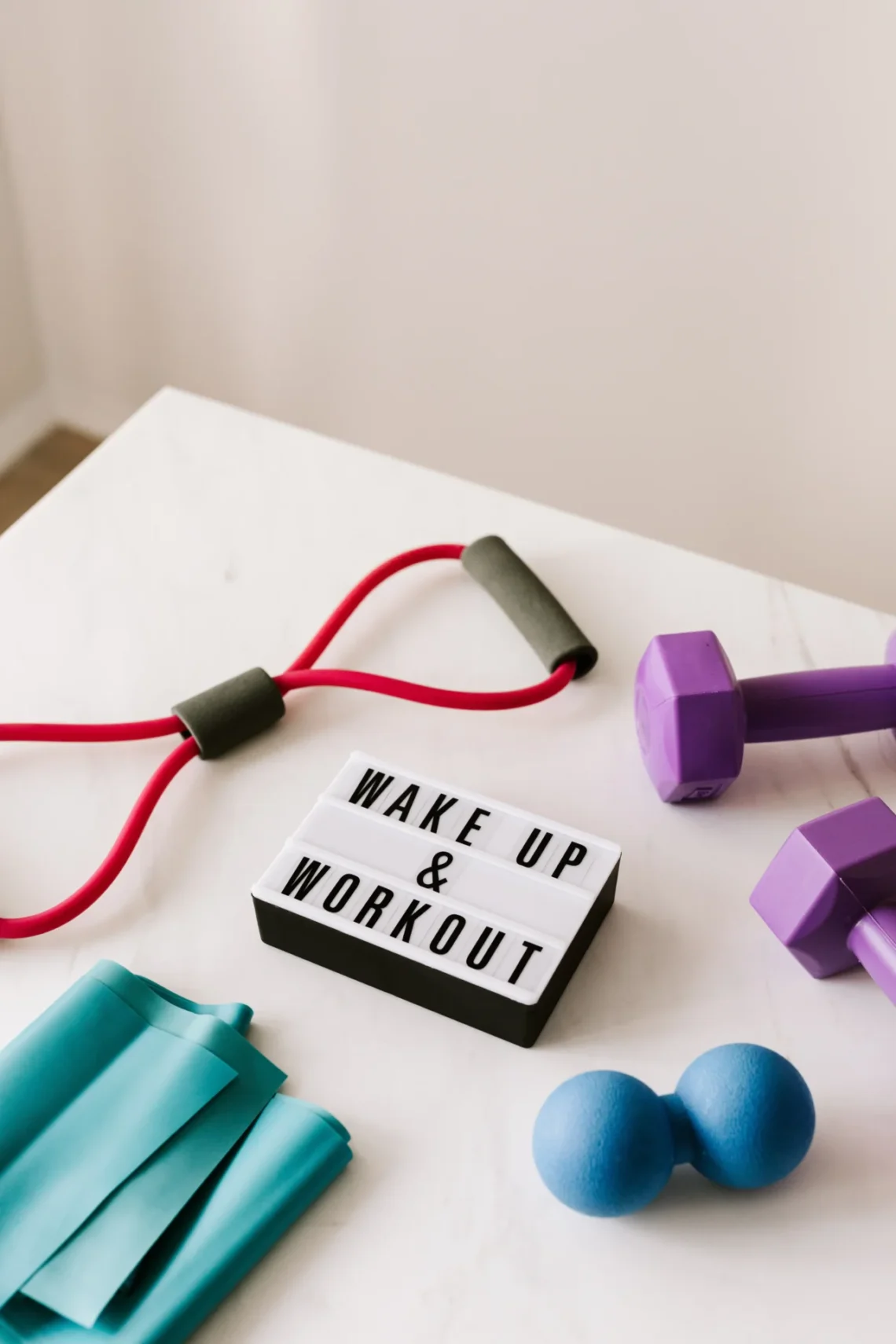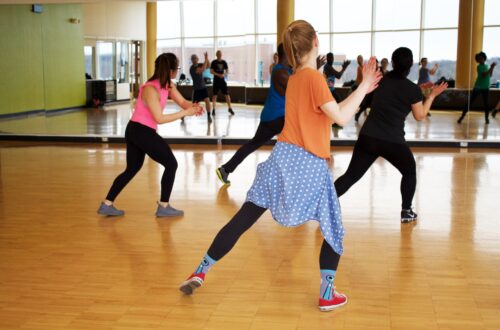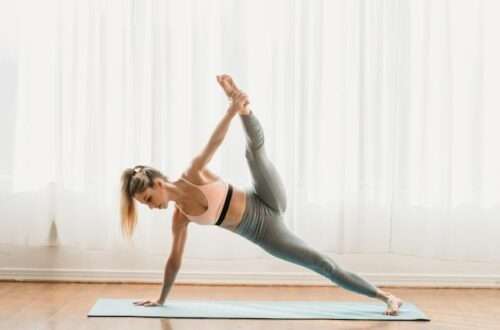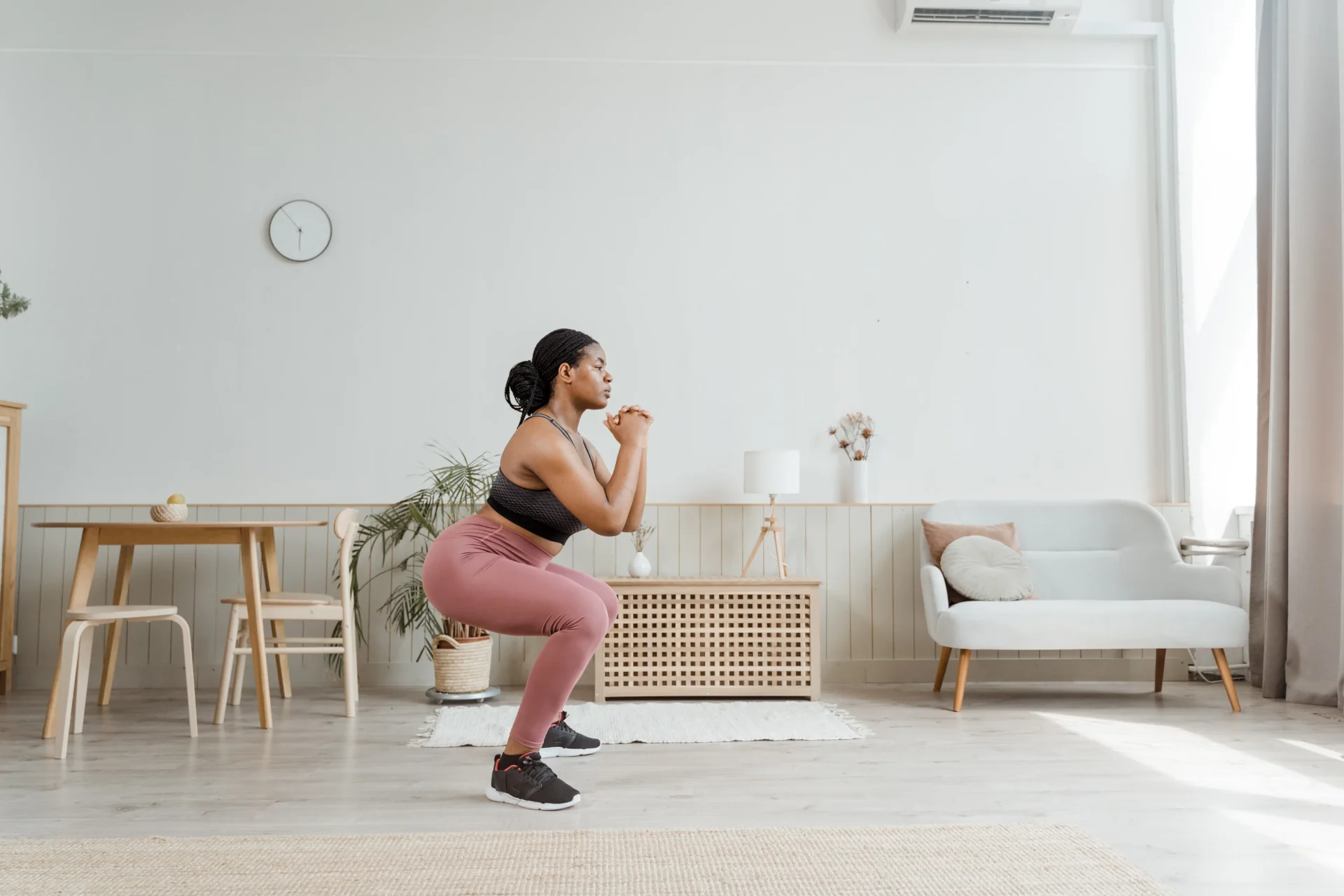
Home Cardio Workouts Made Easy: Try These Exercises Today
In our increasingly busy lives, finding time for fitness can be a challenging endeavor. The demands of work, family, and daily responsibilities often leave us with little energy or time to spare.
However, the pursuit of a healthy lifestyle should never take a backseat. That’s where the power of home cardio workouts comes into play – a convenient, effective, and accessible way to boost your fitness from the comfort of your own living space.
Whether you’re looking to shed those extra pounds, improve your—heart health, or simply find an effective way to relieve stress, our actionable advice and informative content will empower you to take charge of your fitness.
Discover how to transform your living room, backyard, or any available space into your personal fitness haven, where you can break a sweat, boost your energy levels, and enhance your overall well-being.
Get ready to explore the world of home cardio workouts, where simplicity meets effectiveness, and where the path to a healthier, happier you begins today.
The Significance of Cardio at Home
Cardiovascular exercises, commonly known as cardio, are essential for overall health and well-being. They enhance heart health, boost lung capacity, burn calories, and reduce stress. Incorporating cardio workouts into your daily routine can lead to numerous benefits, including weight loss, increased endurance, and a better mood.
What’s even better? You don’t need a gym membership or fancy equipment to reap the rewards of cardio. Home cardio workouts are convenient and flexible, allowing you to exercise on your own schedule. Whether your schedule is packed or you prefer the comfort of your home, these exercises can help you achieve your fitness goals.
Now that we’ve established the benefits of home-based cardio workouts, let’s move on to the specifics of getting started.
Cardio at Home: No Equipment Required
One of the most appealing aspects of home cardio workouts is that they require no special equipment. You can elevate your heart rate and break a sweat using just your body weight and a few common household items. Let’s dive into some effective, no-equipment cardio exercises:
1. Jumping Jacks (Total Body Workout)
How to do it:
- Begin by standing with your feet together and your arms at your sides.
- Jump while spreading your legs wide and simultaneously raising your arms overhead.
- Return to the starting position by jumping again, bringing your feet together, and lowering your arms.
- Repeat this motion to keep your heart rate elevated and your body engaged.
Jumping jacks are a classic cardio exercise that engages your entire body, working your heart, lungs, and muscles. They are a fantastic choice for a quick home cardio session.
2. High Knees (Core and Leg Workout)
How to do it:
- Stand with your feet hip-width apart.
- Lift your right knee as high as possible while simultaneously driving your left arm upward.
- Alternate between your legs in a running-in-place fashion.
- The goal is to mimic the motion of running while bringing your knees as close to your chest as you can.
High knees are an excellent way to elevate your heart rate and engage your core and leg muscles. Aim for high intensity to maximize calorie burn.
3. Burpees (Full-Body Challenge)
How to do it:
- Begin in a standing position with your feet shoulder-width apart.
- Drop into a squat position while placing your hands on the floor in front of you.
- Kick your feet back to assume a plank position.
- Perform a push-up if desired.
- Quickly jump your feet back to the squat position.
- Explode upward from the squat into a jump, reaching your arms overhead.
- Repeat this sequence to challenge your cardiovascular system and build strength.
Burpees are a high-intensity, full-body exercise that combines strength and cardio. They are incredibly effective for burning calories and improving overall fitness.
4. Mountain Climbers (Core and Cardio Combo)
How to do it:
- Start in a plank position with your hands placed directly under your shoulders.
- Alternate driving your knees toward your chest one at a time.
- Keep your core engaged and maintain a steady pace.
- This exercise simulates the motion of climbing a mountain, hence the name.
Mountain climbers are an excellent choice for core strength and cardio conditioning. They also help improve coordination and balance.
5. Squat Jumps (Lower Body Power)
How to do it:
- Stand with your feet shoulder-width apart.
- Perform a squat by bending your knees and lowering your body.
- Explosively jump up from the squat position, reaching your arms overhead.
- Land softly and immediately go into the next squat.
Squat jumps target your leg muscles while elevating your heart rate. They are ideal for toning your lower body and improving cardiovascular fitness.
6. Jumping Lunges (Leg Strengthening)
How to do it:
- Start in a lunge position with one foot forward and the other extended behind you.
- Jump explosively, switching the positions of your feet mid-air to land in a lunge with the opposite foot forward.
- Repeat this movement in a fluid and controlled manner, keeping your heart rate elevated throughout.
Jumping lunges are a challenging bodyweight exercise that targets your legs, glutes, and cardiovascular system simultaneously.
7. Plank Jacks (Core Stability and Cardio)
How to do it:
- Begin in a plank position with your hands placed directly under your shoulders and your body in a straight line from head to heels.
- Jump your feet wide apart and then back together while maintaining the plank position.
- This exercise effectively engages your core muscles while keeping your heart rate elevated.
Plank jacks combine the benefits of planking with cardio. They engage your core muscles and elevate your heart rate.
These no-equipment cardio exercises can be easily incorporated into your daily routine. Mix and match them to create your custom workout or follow along with guided online workouts that feature these moves. Now, let’s delve deeper into the specific benefits of cardio workouts at home.
Cardio for Weight Loss:
If shedding those extra pounds is your primary fitness goal, home cardio workouts can be your secret weapon. Cardio exercises are renowned for their ability to burn calories and promote weight loss. Here’s how they work:
1. Calorie Burn
Cardio exercises increase your heart rate and breathing rate, leading to an elevated calorie burn. The more intense the cardio workout, the more calories you’ll torch. High-intensity cardio, in particular, can yield impressive results.
2. Fat Loss
As you engage in cardio activities, your body taps into its fat stores for energy. This fat-burning process continues even after you’ve finished your workout, thanks to a phenomenon called the “afterburn effect” or excess post-exercise oxygen consumption (EPOC). High-intensity cardio, like interval training, can maximize this effect.
3. Increased Metabolism
Regular cardio workouts can boost your metabolism over time. A higher metabolism means your body burns more calories at rest, which is crucial for sustainable weight loss.
4. Appetite Control
Cardio exercises can help regulate your appetite by influencing hormones that control hunger. After a workout, you may find that you’re less inclined to overeat or make unhealthy food choices.
5. Enhanced Fat Distribution
Consistent cardio workouts can help with fat distribution, especially around the abdomen. This can lead to a healthier body composition and a reduced risk of obesity-related health issues.
Action Tip: To maximize weight loss through cardio at home, aim for at least 150 minutes of moderate-intensity aerobic activity or 75 minutes of vigorous-intensity aerobic activity per week, as recommended by the World Health Organization (WHO). Mix up your cardio routines to keep things interesting and challenging.
Cardio for Heart Health:
A healthy heart is essential for a long and fulfilling life. Cardio exercises are your heart’s best friend, and here’s how they contribute to cardiovascular health:
1. Strengthening the Heart Muscle
Cardio workouts challenge your heart by making it pump blood more efficiently. This strengthens the heart muscle, reducing the risk of heart disease.
2. Lowering Blood Pressure
Regular cardio exercises can lead to lower blood pressure levels. This is significant because high blood pressure is a leading risk factor for heart disease and stroke.
3. Improved Cholesterol Profile
Cardiovascular activities can raise high-density lipoprotein (HDL) cholesterol, often referred to as “good” cholesterol, and lower low-density lipoprotein (LDL) cholesterol, known as “bad” cholesterol. This improves your overall cholesterol profile and reduces the risk of artery blockages.
4. Enhanced Blood Flow
Cardiovascular exercises improve blood circulation, ensuring that all parts of your body receive an adequate supply of oxygen and nutrients. This can prevent blood clots and reduce the risk of heart attacks.
5. Reduced Inflammation
Chronic inflammation is a significant contributor to heart disease. Cardio workouts have been shown to reduce inflammation markers in the body, promoting heart health.
Action Tip: Incorporate cardio exercises into your weekly routine to keep your heart healthy. Start with 30 minutes of moderate-intensity cardio, like brisk walking or cycling, on most days of the week. Gradually increase the duration and intensity as your fitness improves.
High-Intensity Cardio:
High-intensity interval Training, or HIIT, is a workout strategy that involves short bursts of intense exercise followed by brief periods of rest or lower-intensity activity. HIIT is renowned for its effectiveness in burning calories and improving cardiovascular health.
How to do it:
- Choose exercises like jumping jacks, burpees, or mountain climbers for your HIIT routine.
- Perform each exercise at maximum effort for 20 to 30 seconds.
- Rest for a short interval of 10 to 20 seconds between exercises.
- Repeat the cycle for a total of 15 to 20 minutes, or adjust the duration to suit your fitness level and available time.
Here’s why you should consider adding HIIT to your home cardio routine:
1. Time Efficiency
HIIT workouts are incredibly time-efficient. A typical session can be completed in as little as 15-30 minutes, making it perfect for busy individuals.
2. Calorie Burn
The intense nature of HIIT leads to a significant calorie burn, even after your workout is over, thanks to the EPOC effect mentioned earlier.
3. Fat Loss
Studies have shown that HIIT can be more effective at reducing body fat than traditional steady-state cardio exercises.
4. Preserving Muscle Mass
HIIT workouts are designed to preserve lean muscle mass while shedding fat. This is especially important for those looking to tone and sculpt their bodies.
5. Improved Cardiovascular Fitness
Despite their brevity, HIIT workouts provide excellent cardiovascular benefits, including improved heart health and endurance.
Action Tip: Start with a basic HIIT workout at home. Choose an exercise (e.g., jumping jacks, high knees, or burpees) and perform it at maximum intensity for 20-30 seconds, followed by a 10-20-second rest. Repeat this cycle for 10-15 minutes. As you progress, you can increase the duration and intensity of your intervals.
Quick Home Cardio:
We understand that life can get busy, but that’s no reason to skip your cardio workouts. Quick home cardio routines are your solution for squeezing exercise into your schedule. Here’s how to make the most of limited time:
1. Tabata Training
Tabata is a form of high-intensity interval training (HIIT) known for its brevity and intensity. It involves performing an exercise at maximum effort for 20 seconds, followed by a brief 10-second rest, repeated for a total of 4 minutes. Tabata workouts are quick and highly effective for improving cardiovascular fitness.
How to do it:
- Select an exercise of your choice, such as jumping jacks, squats, or push-ups, for your Tabata routine.
- Perform the chosen exercise at maximum intensity for 20 seconds, giving it your all.
- Rest for a short but active 10-second period, focusing on controlled breathing.
- Repeat the cycle for a total of 4 minutes, comprising 8 rounds of exercise and rest intervals.
2. Stair Climbing
If you have access to a staircase, climbing stairs can be an excellent way to engage your lower body and elevate your heart rate. Stair climbing is a versatile option, whether you have a single step, a small flight, or a full staircase at your disposal.
How to do it:
- Simply climb up and down the stairs for a set period, maintaining a steady pace.
- You’ll quickly notice the impact on your legs and cardiovascular system, making it an effective exercise choice for beginners.
3. Jump Rope
Jumping rope, also known as skipping, is a simple yet highly effective cardio exercise that’s suitable for all fitness levels, including beginners.
How to do it:
- Begin with a basic jump by swinging the rope over your head and jumping over it as it passes under your feet.
- As your skills progress, try variations like high knees or double to keep your workouts challenging and engaging.
4. Dance It Out
If traditional exercises don’t quite pique your interest, dancing can be a fun and effective way to get your heart rate up while enjoying your favorite music. Dancing in the comfort of your living room can be a liberating experience that brings joy to your cardio routine.
Feel the rhythm, move your body, and let your heart soar as you dance to the beats that resonate with you.
5. Short Bursts Throughout the Day
If you can’t find a dedicated block of time for cardio, break it into short bursts throughout the day. Do a quick set of jumping jacks or high knees during work breaks or while watching TV.
Action Tip: Schedule short cardio breaks into your daily routine. Set a timer to remind yourself to move and elevate your heart rate for a few minutes, several times a day. These quick bursts of activity can add up to a significant workout over the course of a day.
Cardio for Stress Relief:
Cardiovascular exercises are not just beneficial for your physical health; they can also provide profound stress relief. Here’s how cardio helps reduce stress:
1. Endorphin Release
During cardio workouts, your body releases endorphins, which are natural mood lifters. These chemicals can help reduce stress, anxiety, and symptoms of depression.
2. Cortisol Regulation
Cardio exercises can help regulate cortisol, the stress hormone. Elevated cortisol levels can contribute to chronic stress, but regular cardio workouts can help maintain a healthy balance.
3. Relaxation
Many people find cardio activities like jogging, cycling, or swimming to be meditative and relaxing. These exercises allow you to clear your mind and focus on the present moment.
4. Improved Sleep
Regular cardio workouts can lead to better sleep quality, which is crucial for managing stress and maintaining overall well-being.
5. Stress Outlet
Cardio provides a healthy outlet for pent-up stress and frustration. It allows you to channel your energy into something productive and positive.
Action Tip: Dedicate at least 20-30 minutes a day to cardio exercises as a stress-relief ritual. Choose activities you enjoy, as they are more likely to have a positive impact on your mental well-being.
Creating Your Home Cardio Routine:
Now that you have a wealth of information on the benefits of home cardio workouts, it’s time to design a personalized routine that suits your goals and preferences. Here’s a step-by-step guide to creating your home cardio workout plan:
1. Set Clear Goals
Start by defining your fitness goals. Are you aiming for weight loss, improved heart health, stress relief, or a combination of these? Knowing your objectives will guide your exercise choices.
2. Choose Your Activities
Select cardio exercises that align with your goals and are enjoyable for you. Mix and match exercises to keep your workouts exciting and challenging.
3. Establish a Schedule
Determine how many days a week you can commit to cardio workouts and how much time you can allocate to each session. Consistency is key, so choose a schedule that you can realistically maintain.
4. Warm-Up and Cool Down
Always begin your cardio workouts with a brief warm-up to prepare your body for exercise. A five-minute session of light cardio (e.g., jogging in place or jumping jacks) works well. After your workout, cool down with stretches to prevent muscle soreness and improve flexibility.
5. Gradually Increase Intensity
As your fitness improves, gradually increase the intensity and duration of your cardio sessions. This progression will help you avoid plateaus and continue making gains.
6. Monitor Your Progress
Keep a workout journal to track your progress. Note the exercises you did, the duration, and any additional comments about how you felt during the workout. This can help you identify what’s working and what needs adjustment.
7. Stay Hydrated and Eat Well
Hydration and nutrition play a significant role in your fitness journey. Drink plenty of water throughout the day and fuel your body with a balanced diet that supports your energy needs.
8. Rest and Recovery
Don’t forget to allow your body to rest and recover. Overtraining can lead to burnout and injury. Include rest days in your schedule to give your muscles time to repair and grow stronger.
9. Stay Motivated
Find ways to stay motivated, whether it’s by setting rewards for achieving milestones, working out with a friend virtually, or participating in online fitness challenges. A motivated mindset is essential for long-term success.
10. Seek Professional Guidance
If you’re new to exercise or have specific health concerns, consider consulting a fitness professional or healthcare provider. They can provide guidance and tailor a workout plan to your individual needs.
Conclusion
Home cardio workouts are a versatile and accessible fitness solution, offering numerous benefits that cater to diverse fitness needs and preferences. Whether you’re aiming for weight loss, improved heart health, or stress relief, the convenience and flexibility of home cardio make it a compelling choice for achieving and maintaining your fitness goals.
Remember, it’s not about perfection; it’s about progress. Start with small steps, stay consistent, and celebrate your achievements along the way. With dedication and determination, you can make home cardio workouts a rewarding and integral part of your healthy lifestyle.
So, why wait? Lace-up your sneakers, clear a space in your living room, and get started with your home cardio journey today. Your health and well-being are worth every step, jump, and sweat drop along the way.


You May Also Like

Aerobics: The Fun, Effective, and Affordable Way to Get in Shape
12 September 2024
The Top 5 Zumba Moves for a Great Cardio Workout
19 February 2024

